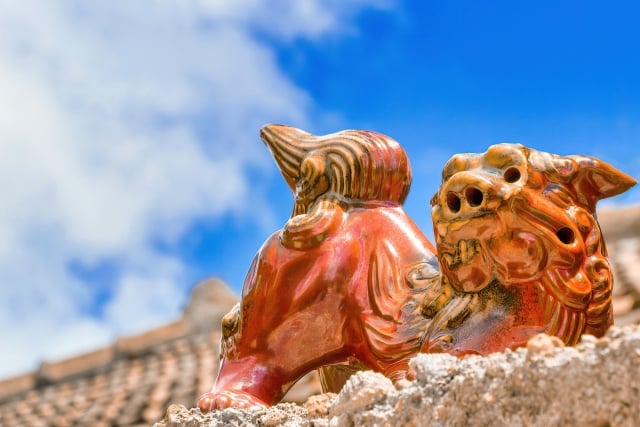Located in the southernmost part of Japan, Okinawa Prefecture has its own unique culture and customs.
One of them is the shisa, lion-shaped statues that can be found on the roofs and entrances of houses and stores in Okinawa.
In Okinawa, shisa are considered guardian gods, and they range from large and powerful to small and cute.
If you have ever visited Okinawa, you have probably seen one at least once.
In this article, I, an Okinawan resident, will introduce the origin and meaning of shisa and how to wake them up if you want to install them in your home!
The Origin of the Shisa
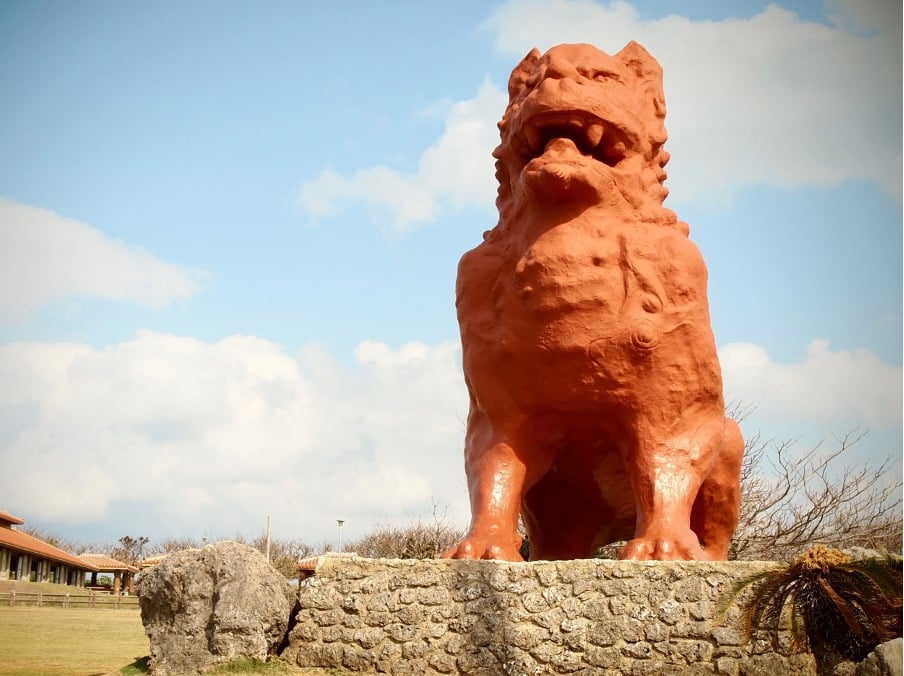
Shisa is a traditional Okinawan guardian deity to ward off evil and prevent disasters.
It is said that the name “shisa” comes from the Okinawan dialect pronunciation of the word “shishi” (meaning "lion" in Japanese).
The origin of Shisa dates back to the Ryukyu Kingdom (1429 - 1879) before Okinawa became a part of Japan.
Shisa were introduced to the Ryukyu Kingdom around the 14th to 15th century.
It is said that the Ancient Near East civilization that flourished in Western Asia and Egypt brought them to Okinawa from China via the Middle East and the Silk Road.
In ancient Egypt, the lion, the king of beasts, was placed in palaces and temples as a symbol of the king's power, famous example being the Sphinx. In the Ryukyu Kingdom, where lions were unknown, they were regarded as a charm against evil and as a guardian deity.
The Oldest Shisa in Japan
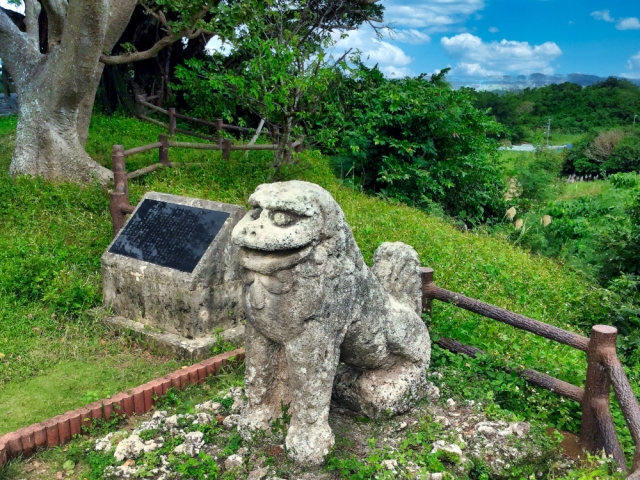
Japan's oldest Shisa is the Great Shisa of Tomori in Tomori, Yaese-cho, Shimajiri-gun, Okinawa Prefecture, built in 1689.
In the past, there were many fires in Tomori, and under the advice of a feng shui master, a lion was erected facing Yaese-dake, a volcano.
After the stone lion was placed, the fires subsided, and the lion came to be worshipped as a guardian god.
The Great Shisa of Tomori is 141.2 cm tall and 175.8 cm long, making it the largest shisa lion in Okinawa Prefecture.
If you have a chance to visit the area, go see the oldest shisa in Japan, which has been watching over Okinawa for three centuries.
There Are Three Main Types of Shisa
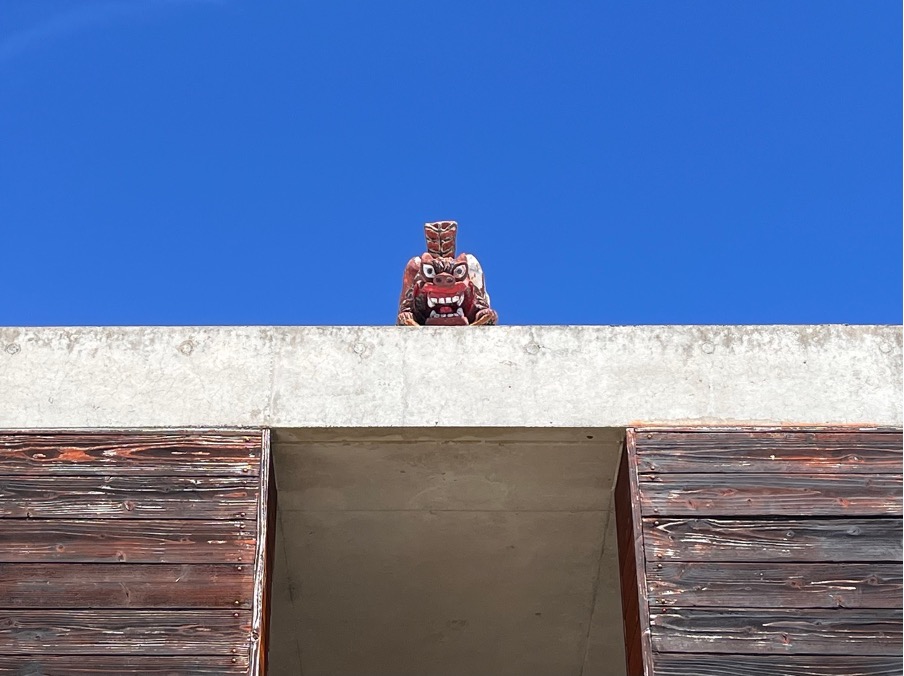
Shisa, the guardian deities of Okinawa, are called by different names and have different meanings depending on where they are placed.
Shisa can be broadly classified into the following three types.
1. Miya-jishi
Shisa set up in castles or tombs during the Ryukyu Kingdom are called Miya-jishi (miya means "palace" and jishi is "lion").
The miya-jishi is considered a “symbol of authority” rather than a charm or protection, and dates from the early days of the introduction of shisa to Okinawa. It is made of carved stone and has excellent carving techniques.
Most of them are placed in pairs on the left and right sides, but in some places they are placed as a single unit.
2. Sonraku-shishi
Shisa that are placed at the entrance of the village or on high ground as guardian deities of the village, and are called sonraku-shishi (sonraku means "village" and shishi is "lion").
The sonraku-shishi is a stone lion that protects the village from “invasion of evil spirits” and “fire,” and is the object of people's worship.
Most sonraku-shishis are placed solo and are placed at the entrance of the village or facing the hiizan ("fiery volcano" in Okinawan dialect).
The Great Shisa of Tomori, the oldest shisa in Japan, as mentioned above, is also a type of sonraku-shishi.
3. Ie-shishi
Probably the most common Okinawan shisa that most people see and associate with Okinawa is the Ie-shishi (house lion).
The ieshishi is a shisa that is placed on the roof or gate of a home and became popular in Japan during the Meiji period (1868-1912).
With the spread of red roof tiles to the private sector, roof tile makers began handcrafting shisa and placing them on the roofs as “guardian deities of private homes”.
Depending on where they were placed, they are called “yashiki-shishi” (house lion), “yane-shishi” (roof lion), or “mon-jishi” (gate lion), respectively.
Gender of Shisa
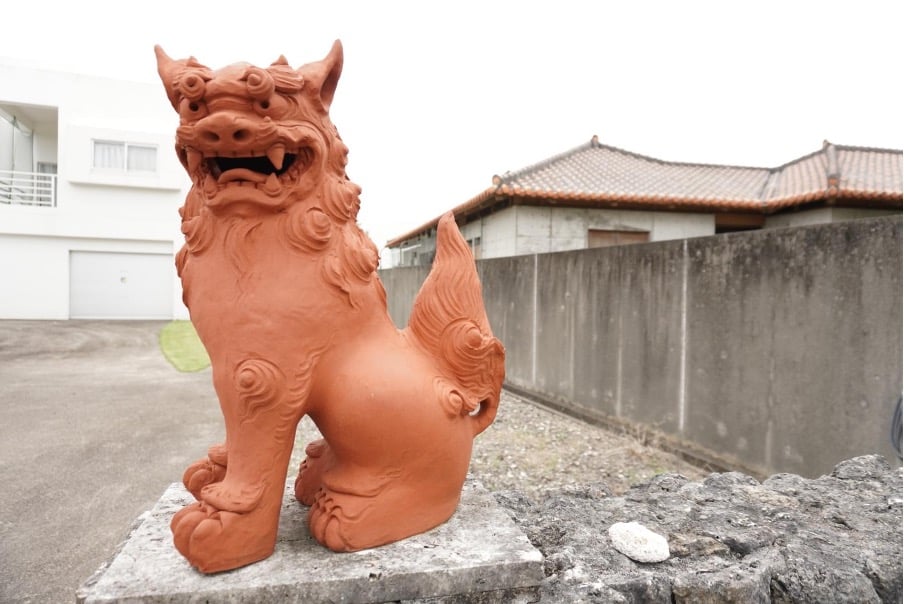
Shisa actually have a gender.
It is easy to distinguish between male and female. The male has its mouth open, and the female has its mouth closed.
The male with its mouth open drives away evil spirits and the female with its mouth closed keeps good fortune at bay.
When placing a shisa, the male is generally placed on the right side and the female on the left.
Since they are supposed to protect the house, both of them should be placed with their faces facing forward.
Recent Emergence of Cute Shisas
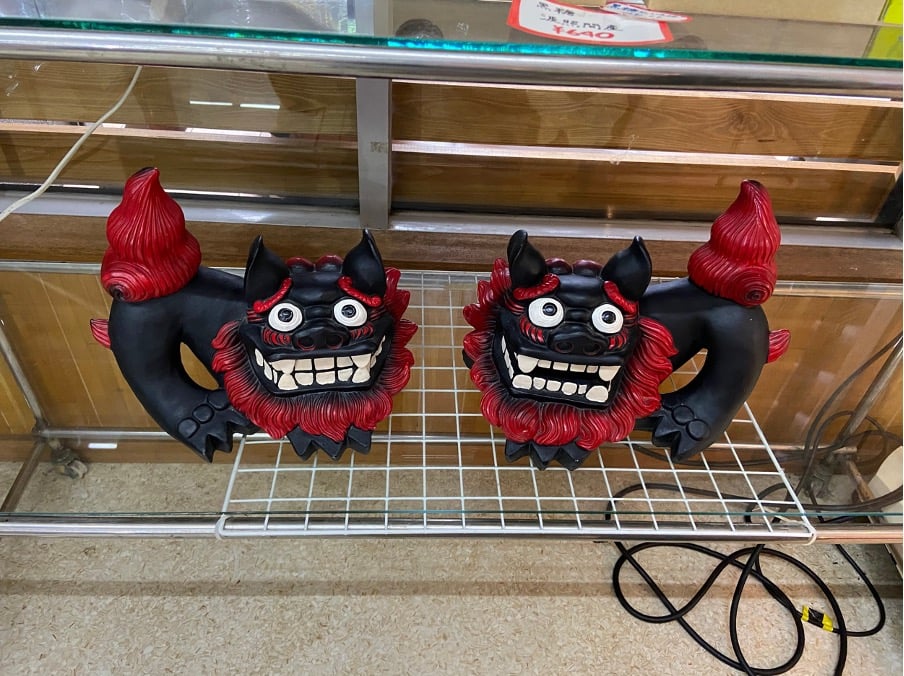
As mentioned above, shisa used to be placed to protect villages and houses from evil spirits.
Recently, however, more and more shisa with cheerful smiles and cheerful expressions are being produced.
There is a wide variety of shisa, from large, luxurious ones to small, ornate ones, so it is recommended that you find one you like and buy it as a souvenir.
You Can Make Your Own Shisa in the Shisa Making Experience!
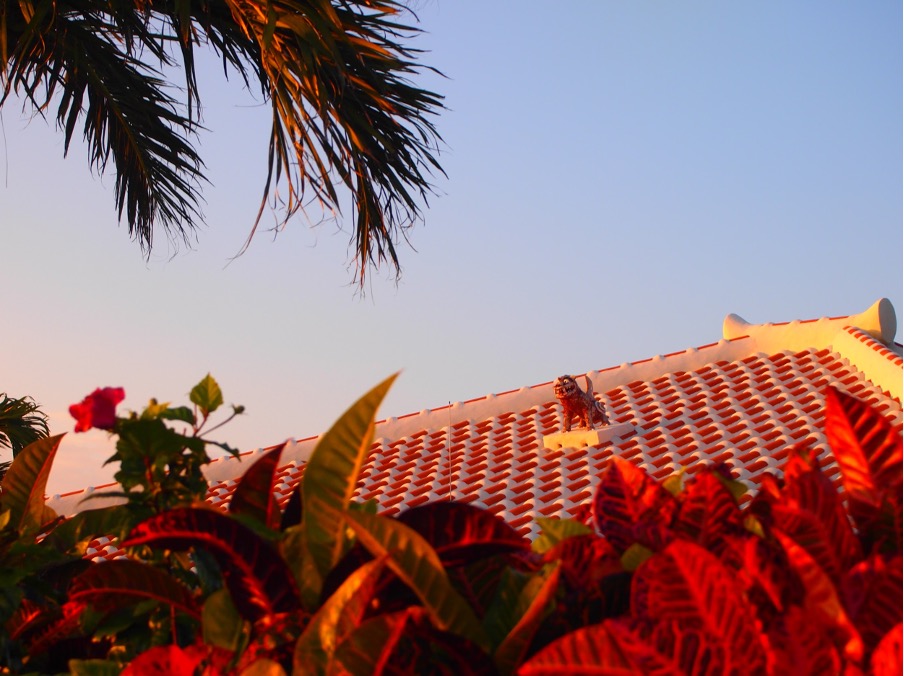
In Okinawa, you can experience making your own shisa at tourist facilities and other places.
There are various types of shisa making experiences, such as painting shisa or making your own shisa from clay.
If the shisa is painted or unglazed, you can take it home with you on the same day, making it an ideal souvenir.
We encourage you to try your hand at shisa making in Okinawa, depending on your travel schedule!
Let your own original shisa become the guardian deity of your home.
<Examples of facilities where you can experience shisa making in Okinawa>
Maimai Shisa, Cute Shisa Specialty Store (https://www.mymy-si-sa.com/) *Short drive from Churaumi Aquarium
Churakaji Okinawa Art Workshop (https://happy-okinawa.jp/churak/) *Naha City, near Kokusai-dori Street
Tsuboya Pottery (https://tousingama.com/tougeitaiken/) * Yomitan Village, Okinawa Prefecture

